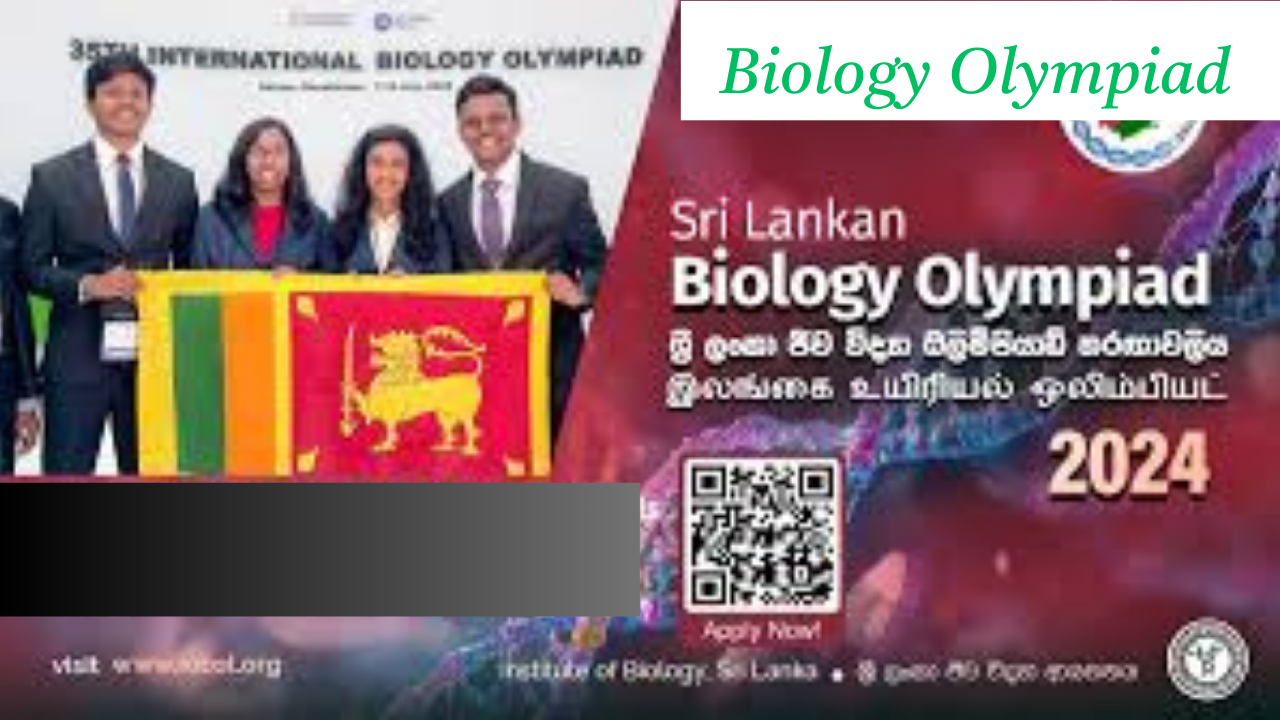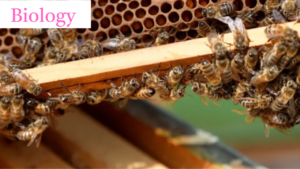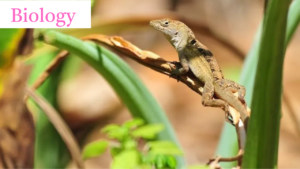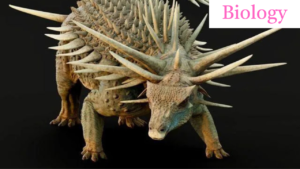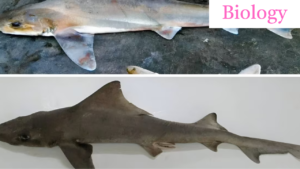The Sri Lanka Biology Olympiad is a competitive examination organized by the Institute of Biology, Sri Lanka, where students can test their knowledge and skills in Biology. The examinations papers are highly standard prepared for Srilanka Biology Olympiad. The questions and answers of Srilanka Biology Olympaid 2024 will be helpful for Biology Olympiad participants.
Instructions:
This paper contains two parts, A and B.
Part A: 40 multiple choice questions with one answer; Total Marks 100.
Part B: 20 multiple choice questions with more than one answer; Total Marks 100.
Part A – Multiple Choice Questions
In the questions of this part select the correct or the most appropriate answer and mark that in the answer sheet.
Chemical and Cellular Basis of Life
(1) Which of the following statements correctly describes the formation of polynucleotide chains?
(1) Nucleotides join by hydrogen bonds between their nitrogenous bases to form the
polynucleotide chain
(2) The phosphate group of one nucleotide forms a bond with the 5′ carbon of the pentose
sugar in the adjacent nucleotide
(3) Condensation occurs between the -OH group of the phosphate of one nucleotide and the –
OH attached to the 3′ carbon of the pentose sugar of another nucleotide
(4) The nitrogenous bases of adjacent nucleotides form phosphodiester bonds
(5) Phosphodiester bonds are formed between adjacent sugar molecules
Answer = 3
2. Regarding cellular organelles and their functions, which of the following statements is correct?
(1) Smooth endoplasmic reticulum is the primary site of protein synthesis in eukaryotic cells.
(2) The Golgi apparatus is responsible for the breakdown of complex molecules
(3) Mitochondria in plant cells play a role in both cellular respiration and photo-respiration
(4) Peroxisomes contain digestive enzymes that hydrolyze H2O2
(5) Ribosomes attached to the rough endoplasmic reticulum primarily synthesize proteins for
use within the cell.
Answer: 3
3. In a species of flowering plant, the diploid chromosome number is 26 (2n=26). Which of the
following statements is correct regarding the chromosomes and genetic variation in the
gametes produced?
(1) Each gamete will contain 26 chromosomes
(2) Crossing over between between non-sister chromatids of homologous chromosomes occurs
during prophase I
(3) Anaphase II cells contain 26 chromosomes, with genetic variation between gametes from
the same parent
(4) Each gamete will contain 13 chromosomes, with no genetic variation between gametes
from the same parent
(5) The total number of chromosomes in a cell just before the second meiotic division is 52
Answer: 2
4. Which of the following statements about the light-dependent reactions of photosynthesis is
correct?
(1) ATP synthesis occurs through substrate-level phosphorylation
(2) Photosystem I involves reduction reaction but not in Photosystem II
(3) The oxygen evolved comes from the splitting of CO2
(4) NADP+ is reduced to NADPH using electrons from water
(5) Cyclic electron flow produces both ATP and NADPH
Answer: 2
5. In C4 plants, which of the following statements about the initial carbon fixation step is correct?
(1) It occurs in bundle sheath cells
(2) It is catalyzed by Rubisco
(3) It produces a 3-carbon compound as the first stable product
(4) It uses phosphoenolpyruvate (PEP) as the CO2 acceptor
(5) It is inhibited by high oxygen concentrations
Answer: 4
6. A mutant strain of yeast is found to lack the enzyme that converts pyruvate to acetyl-CoA. When
grown on glucose, this strain would likely:
(1) Be unable to carry out glycolysis
(2) Produce ethanol at a higher rate than wild-type yeast
(3) Be completely unable to produce ATP
(4) Have a fully functional citric acid cycle
(5) Accumulate high levels of oxaloacetate
Answer: 2
Evolution and diversity
7. This question is based on the following evolutionary events.
1 – Colonization of land by plants and vertebrate animals
2 – Appearance of eukaryotic cells
3 – Origin of photosynthetic organisms
4 – Evolution of invertebrates
5 – Evolution of vertebrates
Which of the following represents the correct chronological order of evolutionary events, from
earliest to latest?
1. 3, 2, 1, 4, 5
2. 2, 3, 1, 5, 4
3. 3, 2, 4, 1, 5
4. 2, 1, 3, 4, 5
5. 3, 2, 4, 5, 1
Answer3: (3, 2, 4, 1, 5)
8. A botanist is studying a newly discovered plant species with the following characteristics:
Presence of xylem and phloem, Reproduction by spores, Absence of seeds, Presence of roots,
stems, and leaves, Independent gametophyte and sporophyte generations, Flagellated sperm
cells
Based on these characteristics, which of the following plant groups does this species most
likely belong to?
1. Bryophytes
2. Lycophytes
3. Pterophytes
4. Gymnosperms
5. Angiosperms
Answer = 3
9. Which of the following statements about seed plants is correct?
(1) The gametophyte of seed plants is visible to the naked eye.
(2) Gametophytes in seed plants are monoecious
(3) The integument protects the megasporangium in seed plants.
(4) Seed plants do not have flagellated sperms
(5) The endosperm in seeds develops from the polar nuclei in the central cell.
Answer = 3
10. Which of the following statements about amphibians is correct?
(1) They are endothermic animals
(2) Young and adult forms have different excretory products
(3) Adults have a dorsal heart
(4) They lay shelled eggs
(5) Only young forms require water to complete their life cycle
Answer = 2
Animal Form and Function
(11) Some epithelia of man and their functions are given below.
Epithelia Functions
A – Simple Columnar epithelium P – Absorption
B – Simple cuboidal epithelium Q – Secretion
C – Simple squamous epithelium R – Exchange of material
Select the response with all correct “epithelium – function” combinations.
(1) A – Q, B – R, C – P (2) A – P, B – Q, C – R (3) A – R, B – Q, C – P
(4) A – P, B – R, C – P (5) A – Q, B – P, C – R
Answer=2
(12) This question is based on the following:
A (i) Distance between actin and myosin filaments
(ii) Length of the sarcomere
B (i) Blood hCG level during pregnancy
(ii) Blood estradiol level
C (i) Number of rods in retina
(ii) Night vision
In humans, increase in (i) results in an increase in (ii) in
(1) A only. (2) B only. (3) C only. (4) A and B only. (5) B and C only
Answer=3
(13) Three statements on human esophagus are given below.
A – Esophagus contains skeletal muscle.
B – Skeletal muscles are involved in peristalsis of the esophagus.
C – Fold bolus is passed along the esophagus due to peristalsis.
Of the above statements,
(1) A and B are correct and B explains the reason for A.
(2) A and B are incorrect.
(3) B is correct and indicates the reason for C.
(4) A and C are correct and A does not indicate the reason for C.
(5) B and C are correct C is explained by B.
Answer=4
(14) The mass and height of two persons, A and B, are as follows:
Person Mass (kg) Height (cm)
A 75 170
B 68 150
Select the correct statement regarding A and B.
(1) B is malnourished.
(2) A shows obesity.
(3) BMI of A is higher than that of B.
(4) A may face diabetes mellitus.
(5) Energy intake of B is higher than his/her energy expenditure.
Answer=5
(15) If the tricuspid valve of a person does not close properly, which of the following would occur
during ventricular systole?
(1) Flowing of some blood form right ventricle to right atrium
(2) Mixing of oxygen poor blood with oxygen rich blood
(3) Flowing of some blood from left ventricle to left atrium
(4) Flowing of some blood from aorta into left ventricle
(5) Flowing of some blood from pulmonary artery into right ventricle
Answer: 1
(16) Which of the following statements regarding respiration of the human is correct?
(1) Two breathing control centres are located in pons Varolii.
(2) Sensors in medulla oblongata detect a decrease in oxygen level in blood.
(3) Oxygen sensors in aorta are stimulated in normal breathing.
(4) Decrease in the pH in cerebrospinal fluid is detected by the sensors in pons Varolii.
(5) Breathing rhythm is regulated by a negative feedback mechanism.
Answer=5
(17) If secretion of aldosterone is inhibited by a certain drug, which of the following would occur in
humans?
(1) K+ concentration in urine will be increased.
(2) Urine would be highly concentrated.
(3) Na+ concentration in urine will be increased.
(4) Urine would be more acidic.
(5) Cl- concentration in urine will be increased.
Answer=3
(18) Three phases of the action potential and some features of each of these phases are given below.
Phases Features
A – Depolarization P – Sodium channels are opened
B – Repolarization Q – Sodium channels are closed
C – Hyperpolarization R – Potassium channels are closed
Select the response with all correct “phase – feature” combinations.
(1) A – Q, B – Q, C – R (2) A – P, B – P, C -Q (3) A – P, B – Q, C – R
(4) A – P, B – Q, C – Q (5) A – Q, B – P, C – R
Answer=4
(19) Three sets of statements regarding the human skin are given below.
A (i) Epidermis is not supplied with blood.
(ii) Epidermal cells do not need oxygen and nutrients
B (i) Epidermal cells contain keratin.
(ii) Keratin provides protection from UV radiation.
C (i) Dermis is composed of areolar tissue.
(ii) Collagen fibres in the areolar tissue provide strength.
Select the correct response regarding the above statements.
(1) A(i) is correct and the reason for it is explained in A(ii)
(2) A(i) and A(ii) are incorrect.
(3) B(i) is correct and the reason for it is explained in B(ii).
(4) A(i), B(i) and C(i) are correct.
(5) A(ii), B(ii) and C(ii) are incorrect.
Answer=4
(20) Which of the following “hormone – function” combination is correct?
Hormone Function
(1) Melatonin Promotes development of sex organs in children.
(2) Thymosin Reduces immunity.
(3) Cortisol Promotes breakdown of skeletal muscle proteins.
(4) Epinephrin Reduces blood pressure.
(5) Calcitonin Promotes release of calcium from bone tissue.
Answer=3
(21) In a normal healthy man,
(1) sperm travel through epididymis for about two weeks and become motile.
(2) Leydig cells secrete inhibin which inhibits the release of FSH.
(3) Sertoli cells secrete testosterone which promotes spermatogenesis.
(4) testes, epididymis and bulbourethral glands are located within the scrotum.
(5) seminiferous tubules combine to form epididymis.
Answer=5
(22) In a normal healthy woman,
(1) LH surge occurs on the 14th day of the ovarian cycle.
(2) estradiol inhibits FSH secretion from the anterior pituitary.
(3) secretary phase of the uterine cycle starts immediately after the menstrual flow.
(4) follicular phase of the ovarian cycle starts after ovulation.
(5) proliferative phase of the uterine cycle coordinates with luteal phase of the ovarian cycle
Answer=2
(23) In the upper limb of humans,
(1) radius articulates with two bones at its proximal region.
(2) elbow joint permits abduction and adduction.
(3) wrist joint is formed by the radius, ulna and three metacarpal bones.
(4) carpal bones articulate with phalanges and contribute for power grip.
(5) joint formed by the bases of the thumb and 2nd finger with a specific carpal bone permits
precision grip.
Answer=1
(24) If A is the 2nd thoracic vertebra and B is the 5th lumbar vertebra of the human,
(1) A has more articular surfaces than B.
(2) body of A is larger than that of B.
(3) vertebral foramen of B is larger than that of A.
(4) a foramen on each of the transverse processes is present only in A.
(5) spinal and transverse processes of A are larger than those of B.
Answer=1
Plant Form and Fuction
(25) Meristematic tissues in plants,
1. never have dormancy periods.
2. are all composed of multinucleated cells.
3. contain a thin cytoplasm.
4. only found in woody plants.
5. can be found at the bases of the stems of monocots.
Answer 5
(26) A monocotyledonous root,
1. vascular bundles are scattered in the ground tissue
2. pericycle is meristematic.
3. phloem is in the groove between the arms of the xylem.
4. vascular tissue contains a central core of parenchyma cells.
5. has a distinct cambial layer between xylem and phloem.
Answer =4
(27) Which of the following always having a negative pressure potential (ψP)?
1. in a phloem sieve tube cell which is transporting organic food substances through bulk flow
from sink to source.
2. in a xylem vessel cell which is transporting water upwards in a tall tree.
3. in a fully flaccid epidermal cell of an onion peel immersed in a sucrose solution.
4. in a guard cell of a leaf epidermis while opening stomata.
5. in a specialised cell of a hydathode while guttation is taking place.
Answer =2
(28) During the radial transport of water in plants,
1. the pericycle functions as the last checkpoint for the selective passage of minerals from the
cortex to the vascular cylinder.
2. the hydrophobic cell walls of root hair cells block the uptake of soil solution.
3. water and minerals enter the symplast always move through the cytosol and cell walls of
adjacent cells.
4. the highest resistance for the radial water flow is found in the apoplast pathway.
5. Water transport upwards in the tracheids through apoplast pathway
Answer= 5
(29) Consider the following sequence of events (P, Q, R, S and T) occur during the opening of
stomata according to the K+ flux hypothesis.
Select the correct sequence of events.
P : increasing the turgor pressure in guard cells.
Q: passive movement of water from surrounding epidermal cells.
R : reducing the water potential within the guard cells.
S : guard cells selectively accumulate K+ ions from the neighbouring epidermal
cells.
1. S, R, P, Q 2. S, R, Q, P 3. R, S, Q, P 4. Q, P, S, R 5. P,R, S, Q
Answer-2
(30) Which of the following plant groups contains a highly-developed gametophyte?
1. liverworts 2. mosses 3. spike mosses 4. club mosses 5. hornworts
Answer-2
Genetics/Molecular Biology
(31) Which of the following statements regarding agarose gel electrophoresis is correct?
1) DNA fragments are made into single strands before electrophoresis.
2) DNA fragments always move towards the anode through the gel during electrophoresis.
3) Large DNA fragments move faster through the gel than small DNA fragments.
4) This method can be used to determine the exact sequence of nucleotides, or bases, in a DNA
molecule.
5) The separated DNA can be directly visualized by exposing them to UV light.
Answers: 2
(32) If primers are not used on a PCR, the reaction would
1) not commence.
2) end after the first cycle.
3) end after a few cycles.
4) yield a mixture of non-specific PCR products.
5) generate single stranded DNA molecules shorter than the target sequence.
Answers: 1
(33) Agrobacterium tumefaciens is a gram-negative soil bacterium that causes crown gall in plants. Why does this bacterium not form galls when it is used to make transgenic plants?
1) The gall-inducing genes in the Ti plasmid are removed and replaced with the transgene.
2) The introduced transgene blocks the action of the gall-inducing genes in the Ti plasmid.
3) The Ti plasmid is removed from A. tumefaciens used to make transgenic plants.
4) The Ti plasmid does not function properly outside of its host cell.
5) The introduced transgene expresses a protein that degrades the gall-inducing genes of the Ti plasmid.
Answer=1
(34) Which of the following enzymes is used to unwind the double helix and separate the two strands
of the DNA molecule in prokaryotic transcription?
1) RNA polymerase
2) Helicase
3) Topoisomerase
4) Primase
5) DNA ligase
Answers: 1
(35) Gene technology begins with isolating the target DNA sequence from the total genome of the donor cells. Purified DNA is used in many downstream applications. In which of the following
methods/techniques is purified DNA not used?
1) Restriction digestion.
2) Sequencing.
3) Polymerase Chain Reaction (PCR).
4) Southern Blotting.
5) Transduction.
Answers: 5
(36) Select the correct statement regarding cell sickle cell anemia.
1) Sickle cell anemia is caused due to a chromosomal mutation.
2) Both normal and sickled RBCs are present in diseased individuals.
3) Disease cannot be diagnosed by PCR.
4) This inherited disorder is more common in males than in females.
5) Diseased individuals can be treated with gene therapy.
Answer: 5
Environment
37. A plant species is found to thrive in an environment with the following characteristics: Average winter temperature of -30°C, Average summer temperature of 5°C; musk oxen and
predatory wolves can be seen; Mostly herbaceous plants in the surrounding area: Presence of migratory birds that nest during summer In which biome is this plant species most likely to be naturally found?
(1) Temperate broadleaf forest
(2) Temperate grassland
(3) Tundra
(4) Northern coniferous forest
(5) Chaparral
Answer= 3
38. A small island nation is experiencing more frequent flooding, coral reef degradation, and an increase in mosquito-borne diseases. Which of the following actions would most directly align with the goals of the Kyoto Protocol to address these issues?
(1) Implementing a nationwide mosquito control program
(2) Developing a coral reef restoration project
(3) Building sea walls to protect coastal areas from flooding
(4) Establishing regulations to reduce industrial greenhouse gas emissions
(5) Creating a task force to study changes in local biodiversity
Answer = 4
Microbiology
39. Which of the following bacteria uses light as an energy source but cannot use carbon dioxide as a carbon source?
(1) Nitrosomonas sp.
(2) Nitrobacter sp.
(3) Thiobacillus thiooxidans
(4) Purple non sulfur bacteria
(5) Green sulfur bacteria
Answer = 4
40. Some antibiotics and their modes of action are given below.
Antibiotic Mode of action
A- Erythromycin Inhibition of cell wall synthesis
B- Tetracycline Inhibition of protein synthesis –
C- Rifampin Inhibition of DNA/ RNA synthesis
D- Penicillin Disruption of plasma membrane
Select the response with correct “antibiotic- mode of action” combinations.
(1) A and B
(2) A and C
(3) B and C
(4) B and D
(5) A and D
Answer=3
Part B
In the questions of this part, one or more responses is/are correct. Mark the correct response/responses in the answer sheet. When any response is wrong, no marks shall be awarded to that question.
Chemical and Cellular basis
1. Which of the following statements regarding the extracellular matrix is/are correct?
(1) It is composed of glycoproteins and polysaccharides.
(2) It is secreted by cells.
(3) It forms a protective layer over the cell surface.
(4) Proteoglycans are embedded in a network woven out of collagen fibers
(5) It prevents signaling between cells and their environment.
Correct responses: (1), (2), (3)
2. Which of the following statements about protein structure is/are correct?
(1) The primary structure of a protein determines its potential for forming specific secondary and tertiary structures.
(2) Intramolecular hydrogen bonding between peptide backbone atoms is primarily responsible for stabilizing tertiary structure.
(3) Both alpha helix and beta pleated sheet configurations involve hydrogen bonding, but differ in their spatial arrangement.
(4) ) Hydrogen bonds between carboxyl and amino groups of the same polypeptide chain contribute to secondary structure formation.
(5) Quaternary structure can involve both inter- and intra-molecular interactions between protein subunits.
Correct responses: (1), (3), (4), (5)
3. Which of the following statements about enzyme inhibition is/are correct?
(1) Toxins are irreversible inhibitors
(2) Non-competitive inhibitors bind to the active site of the enzyme
(3) Allosteric inhibitors can bind to sites other than the active site
(4) Non-competitive inhibitors can be overcome by increasing substrate concentration
(5) Feedback inhibition involves the binding of the final product in an inhibitory manner
Answers = 1, 3, 5
Evolution and diversity
4. Which of the following statements regarding Darwin’s theory of natural selection is/are correct?
1. Populations produce more offspring than can survive and reproduce.
2. Organisms acquire adaptations during their lifetime, and these acquired traits are passed on to their offspring.
3. Survival and reproduction are random processes, unrelated to inherited traits.
4. Individuals with favorable traits are more likely to survive and reproduce.
5. Evolution occurs due to random genetic mutations.
Correct answers: 1, 4
5. Which of the following statements about the history and present system of classification is/are
correct?
(1) Theophrastus classified plants according to the number of stamens of flower.
(2) The Five kingdom system of biological classification was introduced with the discovery of the electron microscope
(3) Ernest Haeckel introduced the taxon Phylum
(4) The three-domain system of classification was introduced by Robert H. Whittaker
(5) The present system of classification uses the sequence of amino acids as an important taxonomic criterion.
Correct responses: (2), (3), (5)
(6) Which of the following statements is/are correct regarding human stomach?
(1) HCl is released by parietal cells.
(2) Pepsin is released by chief cells.
(3) Chyme is acidic.
(4) Chyme continuously flows into the duodenum.
(5) The stomach contributes to providing defense.
Answer=3,5
(7) Which of the following statements regarding the human red blood corpuscles is/are correct?
(1) They lack mitochondria and therefore do not produce ATP.
(2) Their life span is around 120 days.
(3) They are unique cellular components of blood as they lack nuclei.
(4) Their count varies according to gender.
(5) They play a role in adaptive immunity.
Answer=2,4
(8) Which of the following statements regarding the human immune system is/are correct?
(1) Antibodies are involved in passive immunity.
(2) Memory cells are involved in active immunity.
(3) BCG vaccine provides artificially acquired passive immunity.
(4) Antivenom provides artificially acquired active immunity.
(5) Antibodies are involved in allergy responses.
Answer=1,2,5
(9) If nerve cells in the hypothalamus are damaged due to a stroke, which of the following is/are likely to be affected?
(1) Maintaining balance
(2) Reasoning and making judgements
(3) Sexual behaviour
(4) Sleeping and awakening
(5) Vomiting
Answer=3,4
(10) Which of the following statements regarding the sensory receptors of humans is/are correct?
(1) Thermoreceptors are located in the skin and hypothalamus.
(2) Krause end bulbs detect warmth.
(3) Pacinian corpuscles and Meissner corpuscles are sensitive to light pressure.
(4) Hair cells in the vestibule of the inner ear detect angular movements of head.
(5) Rods are more abundant than cones in the anterior region of the retina.
Answer=1,5
(11) Which of the following statements regarding the reproductive system of a woman is /are correct?
(1) Prostaglandins and estradiol are involved in inducing contractions of the uterus during parturition.
(2) Uterine contractions stimulate secretion of oxytocin from the anterior pituitary.
(3) Labour is completed with the delivery of the baby.
(4) Oxytocin is produced even after the child is born.
(5) Prolactin is secreted due to nervous and hormonal stimulations,
Answer=1,4,5
(12) Which of the following statements regarding human skull is /are correct?
(1) Cranium is composed of eight bones.
(2) Ethmoid bone, which can be seen through the eye socket, is a facial bone.
(3) Bones in the cranium and face contribute to form the zygomatic arch.
(4) Sinuses are present only in four bones of the cranium.
(5) Occipital condyles form shallow ball and socket joints with the atlas vertebra.
Answer=1,3
Plant Form and Function
(13) The dermal tissue in plant shoots,
1. is a tightly packed single cell layer
2. protects the internal tissues from desiccation.
3. secretes chemicals involved in defence against pathogens.
4. does not replace even after secondary growth.
5. root hairs are also found in the epidermis
Answers 1, 2, 3
(14) Which of the following is/are correct on Phylum Lycophyta?
1. some members grow as epiphytes
2. all are heterosporous
3. in some members gematophytes live below the ground are having symbiotic relationships with soil fungi.
4. some members have ground hugging stems producing roots
5. some members produce club-shaped strobili.
Answers =1, 3, 4, 5
(15) Select the correct statements on photomorphogenesis in plants.
1. cryptochromes, phytochromes and xanthophills are the major light receptors responsible for the photomorphogenesis.
2. cryptochromes are the major photoreceptors responsible for seed germination.
3. the action spectrum provides some information about the regulation of photomorphogenesis.
4. in seed germination the hypocotyl elongation is due to the phytochrome receptors.
5. farred light (wave length ~700 nm) inhibits seed germination.
Answers 3, 5
Genetics/Molecular Biology
(16) The following diagram (Figure 1) shows some of the essential steps involved in the genetic
engineering of a bacterium to produce a recombinant protein.
In which step/s restriction endonucleases are used?
1) P
2) Q
3) R
4) S
5) T
Answers: 3 & 4
(17) Which of the following proteins is/are produced using genetically modified mammalian cells?
1) Factor VIII
2) Human insulin
3) Chymosin
4) Tissue plasminogen activator (tPA)
5) DNA Polymerases
Answers: 1 & 4
(18) Bt crops
1) contain foreign genes from a bacterium.
2) express proteins called Bt toxins.
3) are not harmful to humans to consume.
4) have a potential danger for non-target insects.
5) are grown only for biofuel and for animal feed.
Answers: 1,2,3,4
Environment
(19) Which of the following statements are correct regarding freshwater ecosystems in Sri Lanka?
(1) Grasses and sedges can be seen in Villus
(2) Freshwater swamp forests are common throughout Sri Lanka.
(3) Inland freshwater marshlands contain peat and water-logged sticky clay soil.
(4) There are natural lakes scattered mainly in the lowland dry zone of Sri Lanka.
(5) Plants like Nelumbo nucifera, and Aponogeton species are commonly found in reservoirs.
Answers = 1, 3, 5
Microbiology
(20) The causative agent of which of the following diseases produces an exotoxin?
(1) Tuberculosis
(2) Leptospirosis
(3) Tetanus
(4) Cholera
(5) Typhoid
Answers = 3, 4


